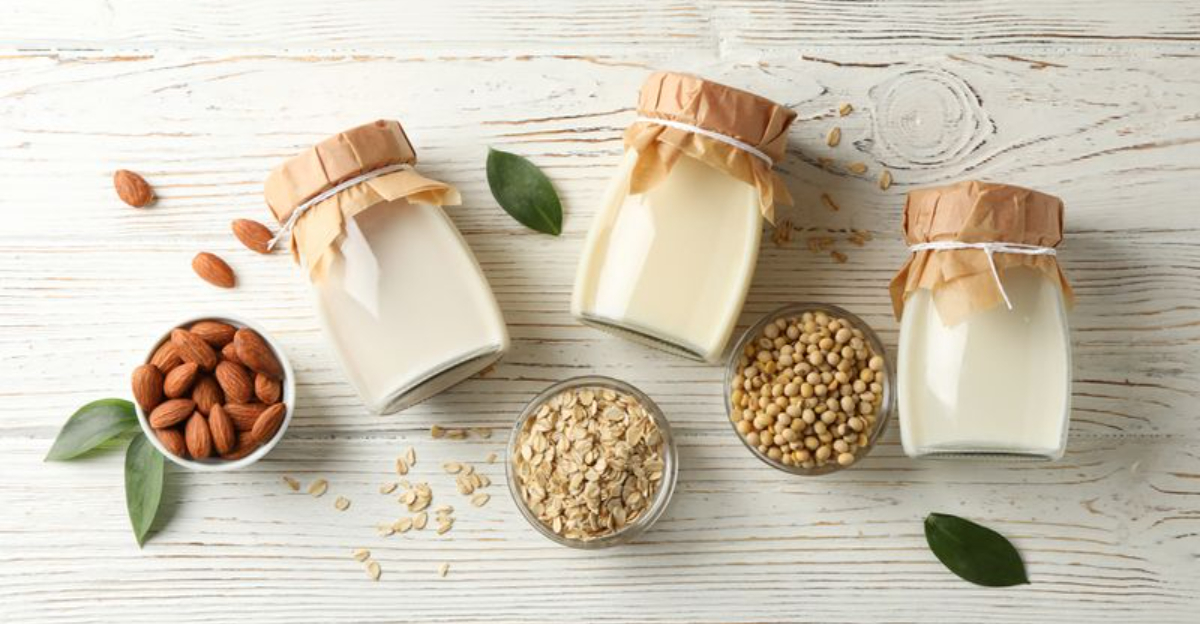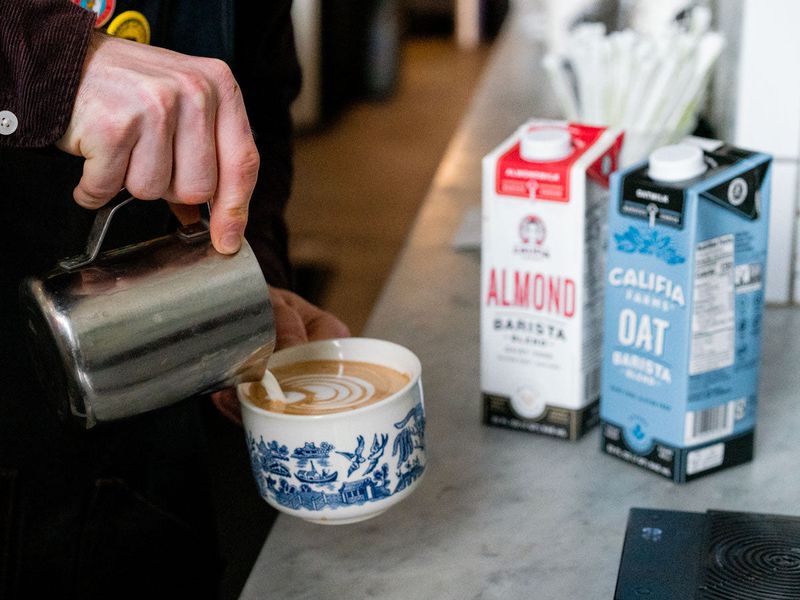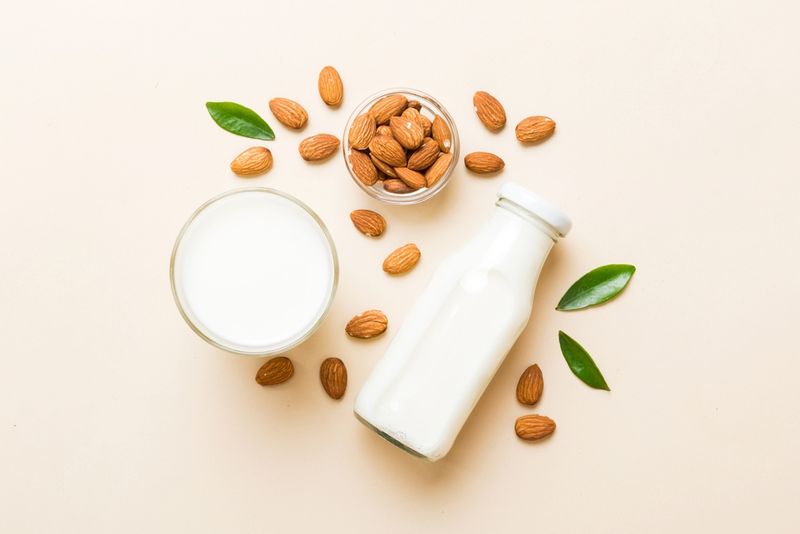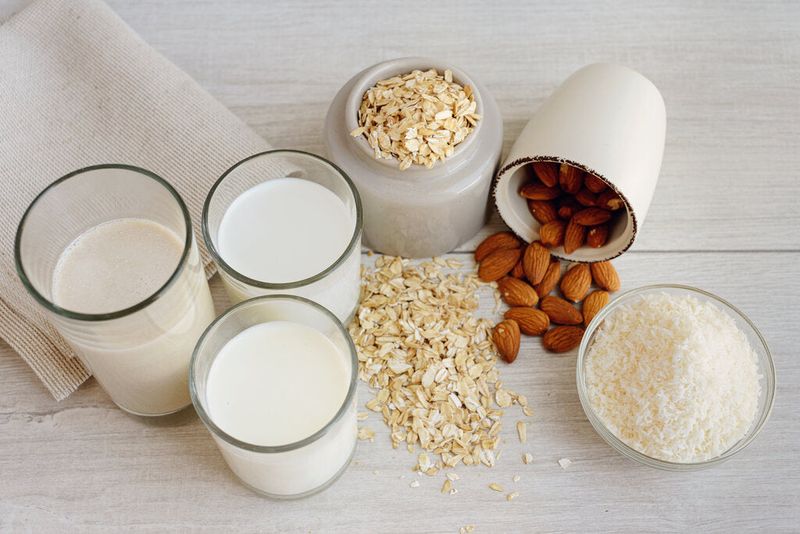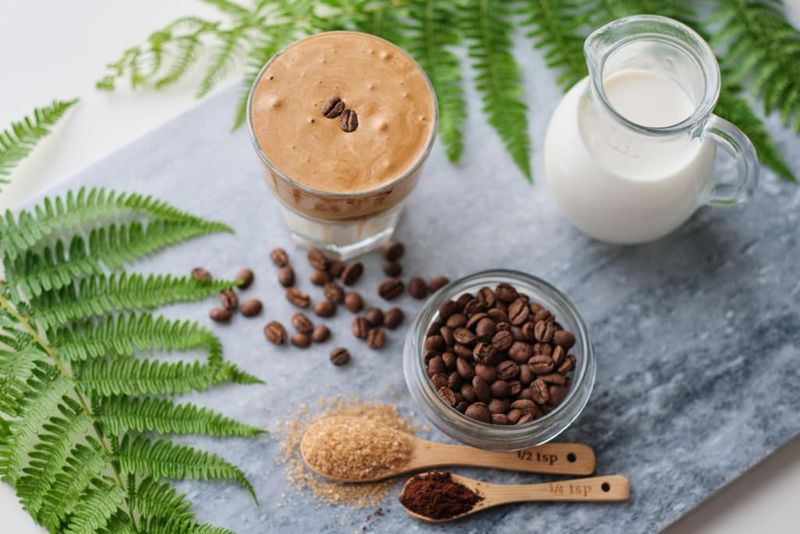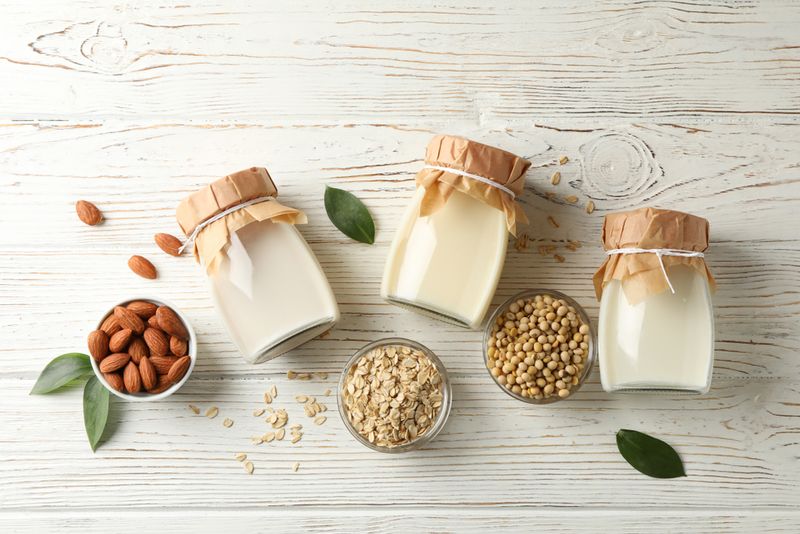Your morning coffee ritual just got more complicated. With plant-based milks taking over coffee shops everywhere, choosing between almond, oat, and soy can feel overwhelming. Each option brings unique flavors, textures, and benefits to your cup, but which one truly transforms your coffee into the perfect brew?
1. Texture and Creaminess Factor
Oat milk wins the creaminess contest hands down. Its naturally thick consistency mimics whole dairy milk better than any competitor, creating that velvety mouthfeel coffee lovers crave.
Soy milk comes in second with a decent body that holds up well in hot beverages. The protein content helps it maintain structure without separating too quickly.
Almond milk tends to feel watery and thin, especially in hot coffee. While some people enjoy the lighter texture, it won’t give you that rich, indulgent experience if you’re looking for a creamy latte.
2. Flavor Profile Differences
Almond milk brings a subtle nuttiness that some coffee drinkers adore. It adds a delicate sweetness without overwhelming your brew, making it ideal for those who prefer lighter flavors.
Oat milk tastes naturally sweet and slightly grain-like, which complements coffee’s bitterness beautifully. Many baristas swear it enhances rather than masks the coffee’s natural notes.
Soy milk offers the most neutral flavor, allowing your coffee’s true taste to shine through. However, some brands have a beany aftertaste that not everyone appreciates, so choosing quality matters here.
3. Frothing and Latte Art Performance
Want Instagram-worthy latte art? Oat milk is your best friend. Its fat and protein balance creates stable microfoam that holds patterns beautifully, rivaling traditional dairy milk.
Soy milk produces decent foam thanks to its protein content, though it requires more skill to perfect. The foam tends to be denser and less silky than oat milk’s dreamy texture.
Almond milk struggles significantly with frothing. Its low protein and fat content means the bubbles collapse quickly, making cappuccinos and lattes disappointing. Barista blends exist but still underperform compared to competitors.
4. Nutritional Value Breakdown
Soy milk packs the most protein punch, offering around eight grams per cup—comparable to cow’s milk. This makes it excellent for those seeking muscle recovery or sustained energy throughout the morning.
Almond milk keeps calories lowest, typically containing just 30-50 calories per serving. Perfect for weight-conscious coffee drinkers, though it lacks substantial protein or natural nutrients.
Oat milk falls somewhere in between with moderate calories and carbohydrates. It provides fiber that other options lack, plus most brands fortify it with calcium and vitamin D for bone health.
5. Environmental Impact Considerations
Oat milk emerges as the eco-friendly champion. Growing oats requires significantly less water than almonds and causes minimal environmental disruption when sourced sustainably.
Almond milk faces serious criticism for its water consumption—about 1.1 gallons per single almond. California’s drought issues make this particularly concerning for environmentally conscious consumers.
Soy milk sits in the middle environmentally. While past deforestation concerns exist, most soy for human consumption now comes from responsible North American and European farms. Choosing organic, non-GMO brands ensures better sustainability practices.
6. Coffee Compatibility and Curdling Issues
Temperature and acidity can make or break your plant-milk coffee experience. Soy milk occasionally curdles in highly acidic or extremely hot coffee, creating an unappetizing separated mess in your mug.
Almond milk also risks separation, especially cheaper brands with fewer stabilizers. The proteins struggle to handle coffee’s heat and pH levels, resulting in grainy, unpleasant texture.
Oat milk demonstrates impressive stability across different coffee types and temperatures. Its chemical composition handles acidity gracefully, rarely separating even in extra-hot lattes or strong espresso shots. Barista versions perform even better.
7. Price and Accessibility Factors
Soy milk typically costs least, making it budget-friendly for daily coffee drinkers. Its long shelf life and widespread availability mean you’ll find it practically everywhere, from gas stations to specialty stores.
Almond milk prices vary widely depending on brand quality. Basic versions cost similarly to soy, while premium barista blends command higher prices without necessarily delivering better coffee performance.
Oat milk remains priciest, especially barista editions designed specifically for coffee. Prices have dropped as popularity surged, and many coffee enthusiasts consider the superior texture worth the extra dollars.
